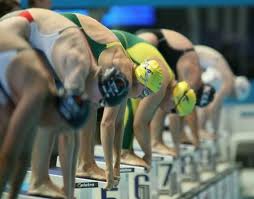Being sidelined for weeks or months due to a sickness or injury will have a tremendous impact on your physical fitness regimen. There is the psychological burden that you will have to deal with when coming from an injury, as you may have doubts on whether you can continue to work out the same way you did before. There’s also fear that you may re-aggravate the injury.
Likewise, being sidelined for a long period may result to muscle tone loss. When the muscles are not used, our bodies lessen the metabolic processes needed to maintain muscle tone. This causes the muscles to decrease.
Experts suggest that you listen to your body when you attempt to work out after an injury or sickness. Your body will give you signals that you’ve done too much exercises, or when it is ready to lift a 100-pound weight. Of course, you have to listen to your doctor or physical therapist.
There are other factors that may affect your ability to exercise after an injury or sickness. These include your age, length of time that you were sidelined, and the level of physical fitness you were at before you suffered the sickness or injury. For instance, there’s a good chance that you can return to physical activity soon if you suffered a sprained ankle than someone who had a disc herniation.
But there are some tips that you should keep in mind as you work yourself back from sickbay. These include:
Get Clearance
 Before you head to your favorite gym like Planet Fitness or Snap Fitness, make sure your physician is aware of your plans to work out again. This is especially true if you have suffered serious injuries like a back injury. Consulting with your physician gives you an added benefit since the professional will be giving you recommendations for the suitable exercises for your condition.
Before you head to your favorite gym like Planet Fitness or Snap Fitness, make sure your physician is aware of your plans to work out again. This is especially true if you have suffered serious injuries like a back injury. Consulting with your physician gives you an added benefit since the professional will be giving you recommendations for the suitable exercises for your condition.
You might also want to see a physical therapist who can give you a step-by-step workout program. The professional will assess your ability to work out by looking at the areas of muscle weakness or imbalances.
Taking it Slow
 Don’t rush into working out again after being sidelined for weeks and months. Your body should be given enough time to start communicating with the brain again. An injury often causes the temporary stop in communication between your brain and the body, especially the muscles. The nerves, or the main channel of communication between the muscles and brain, would weaken with prolonged disuse.
Don’t rush into working out again after being sidelined for weeks and months. Your body should be given enough time to start communicating with the brain again. An injury often causes the temporary stop in communication between your brain and the body, especially the muscles. The nerves, or the main channel of communication between the muscles and brain, would weaken with prolonged disuse.
Taking it slowly also means starting with walking. Begin with a few minutes of walking and listen how your body responds to this gradual movement. Then slowly increase the pace of walking or the number of minutes you walk.
Start Swimming
 If you are not fond of swimming, begin learning how to love it as this activity is considered an ideal workout option for those recovering from any injury. Swimming soothes swollen tissues and supports weakened joints. It also gives you a total body workout without the risk of aggravating the injury. Likewise, this exercise improves your cardiovascular resistance while injured. You might need to enroll in a gym with pool facilities if your current gym doesn’t have one, though.
If you are not fond of swimming, begin learning how to love it as this activity is considered an ideal workout option for those recovering from any injury. Swimming soothes swollen tissues and supports weakened joints. It also gives you a total body workout without the risk of aggravating the injury. Likewise, this exercise improves your cardiovascular resistance while injured. You might need to enroll in a gym with pool facilities if your current gym doesn’t have one, though.
Engage in Other Activities
 If you have never been to a yoga class before, enroll in one to hasten your recovery from injury or illness. Yoga poses are ideal for stretching and strengthening your muscles. You can ask the yoga instructor in your gym to give you modified poses that are appropriate with your current level of fitness.
If you have never been to a yoga class before, enroll in one to hasten your recovery from injury or illness. Yoga poses are ideal for stretching and strengthening your muscles. You can ask the yoga instructor in your gym to give you modified poses that are appropriate with your current level of fitness.
You must also stretch more often. Stretching can strengthen the ligaments and muscles, adding flexibility and lessening the risks of injuries. People tend to forget that most injuries, at least those that were incurred while working out, were due to the lack of stretching before and after a work-out. So incorporate stretching into your daily routine and never miss it again.
You can also try calisthenics like push-ups, squats, sit-ups, and planks if your body allows you to. These calisthenics are all great in building muscles. You could add these into your routine to build and maintain muscle tone, or until you can return to your old routine again.
Once you have felt that the injured part of your body has stopped hurting, or you have gotten your wind back, ease back into your exercise routine slowly. Listen to your body and be wary of any sign of weakness or pain. If you feel any pain or weakness, stop whatever you are doing and try something else.
In closing, remember that your body needs enough time to recover from injury or illness. So allow yourself to slowly get back to the level of fitness you’ve had before getting sick or injured. And never attempt to work out without clearance from your doctor.
